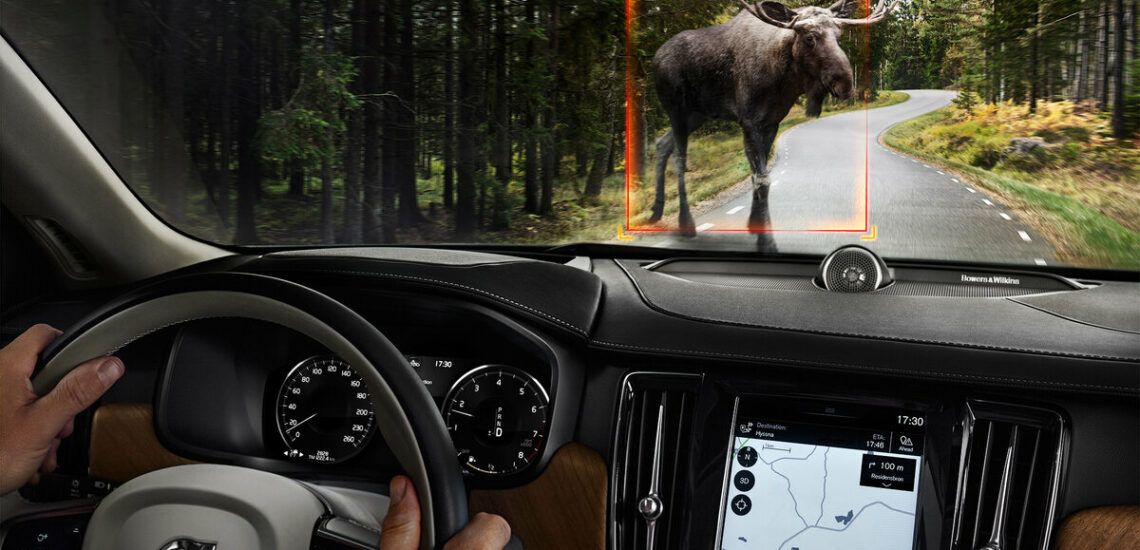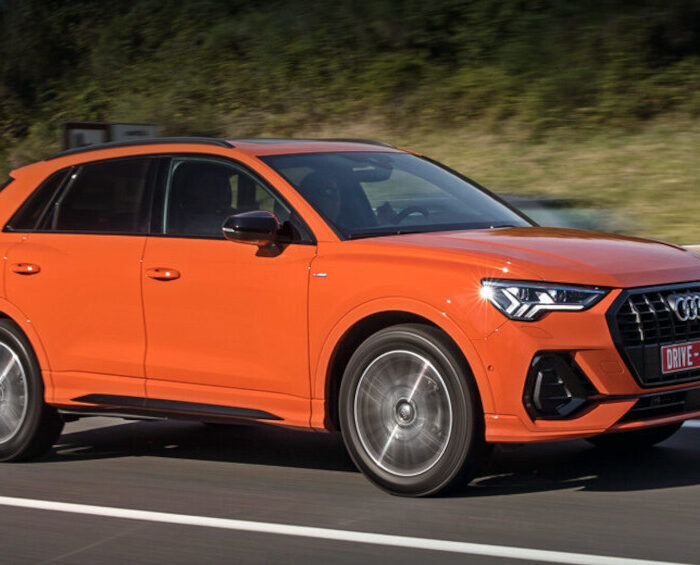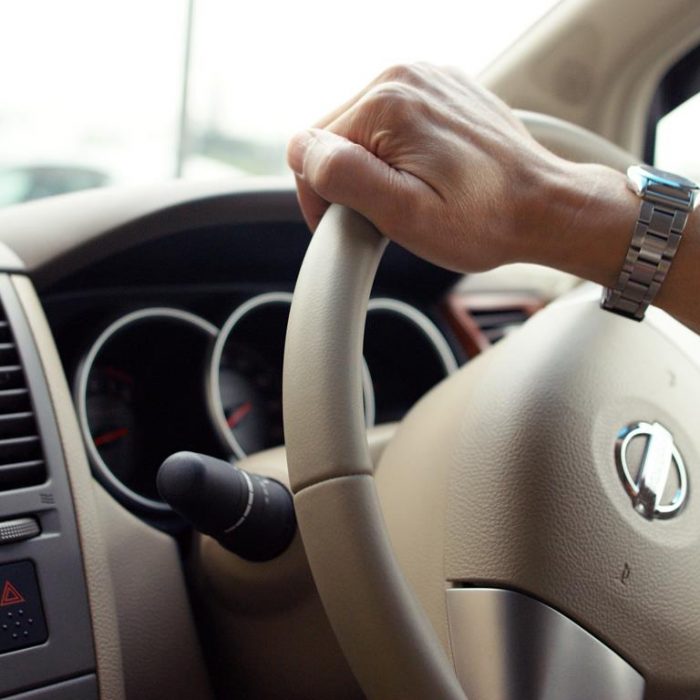All about the moose test
Imagine that you are calmly driving along a highway, and there is a dense forest on the left and right. If there is no fence, any inhabitant of this forest – a fox, a hare, a wild boar, a hedgehog, can run out onto the road… But all these animals are absolutely not comparable with a moose – a huge three-meter creature with spreading horns and weighing half a ton or more. It is long moose legs that often cause a moose carcass to smash into a cabin after a collision between the animal and the car. Airbags have no power here. It is only hoped that a driver has a quick reaction and ability to evade an obstacle that suddenly appears on the roadway. Checking the car for handling and stability in the situation of avoiding obstacles at high speed is called the moose test.
Where did this name come from?
The test became known as “moose” due to Scandinavia. In this area of the world, moose are quite common, and even in small Finland, about ten people die in accidents with moose every year. Cute horned animals most often appear on roads outside built-up areas, that is, where cars accelerate to the maximum possible speed.
The term “moose test” was coined by journalists of the Swedish magazine Teknikens Varld in 1997, although before that, a test called “the evasive manoeuvre test” (Undanmanöverprov) was used to assess the adhesion of tires to the surface to check their performance on the track – from about the 1970s. Later, the test for the car stability during an extreme maneuver was informally included in the program of field tests of new cars. All Volvo models were tested in this way for their ability to avoid collisions with a suddenly appearing obstacle. It was taken into account that most often this obstacle is large animals, such as moose and wild boar, running across the roadway directly in front of moving vehicles.
Conditions for passing the moose test
As a rule, an average speed of a car on country roads is 100 km/h. If an obstacle suddenly appears, the driver first hits the brakes. But a collision is still inevitable – at this speed, the braking distance is not enough. This means you need to avoid the obstacle – after the start of braking, when the speed drops from 100 km/h to about 70 (optimally – 69 km/h). It has been experimentally proven that it is at this speed that cars most often get into accidents with animals. Therefore, it is important for drivers to learn how to quickly avoid an accident, and design features of the car should help to perform this complex maneuver at the specified speed. A suspension, shock absorbers, springs and stabilizers are adjusted during the moose test in such a way as to save the life of the driver and the animal.
Therefore, conditions for passing the moose test are as follows:
1) car acceleration up to 100 km/h;
2) braking;
3) sharp lane-changing of the car (about two meters before the obstacle);
4) return of the car to its lane.
The test is considered passed if there is no drifting or skidding.
In this case, the moose test is performed on an asphalt track only in dry weather, and the car is loaded to its rated load capacity.
The moose test has become a mandatory exercise for factory testing programs. All major automakers necessarily indicate results of this test. A chassis and a steering rack are adjusted accordingly. And cars must be able to avoid the “moose”-obstacle when fully loaded and with passengers on board.
Whom did the moose test make to fork out?
In 1948, Julian Shermis died in a collision of a Saab with a moose. It was from that time until the brand’s closure in 2011 that Saab’s management kept statistics on all road accidents involving animals. It is for safety reasons that the ignition on most Saab models was located not on a steering tube, but on a central tunnel next to a gearbox lever – too many drivers’ knees were crushed due to the heavy ignition modules on steering tubes. It is because of the large number of accidents with moose (6,100 in more than 60 years) that high-strength windshield and reinforced A-pillars are used in Saab cars. This automobile concern didn’t save on safety.
In 1997, the driver of the Swedish magazine Teknikens Varld, Robert Collin, overturned the Mercedes A-Class during the moose test. That happened at a speed of 60 km/h. Reason: poor chassis design and tendency to roll over. When asked why such severe tests are necessary, the journalists of the magazine answered: “To check how the car drives around a moose.” As a result, the term was established, and Daimler had to seriously invest in the design of the Mercedes A-Class and spend about $250 million on upgrades and technical changes. The company had to recall all 17 thousand units that were already being sold. Specialists of the concern completely redesigned the car, turning it into a safer vehicle for the whole family. They had to make the compact model with a short base change lanes without rolling over. The failure of the moose test prompted the German automaker to make extensive use of electronic stability control systems in premium cars.
Which car models can pass the moose test better?
Teknikens Varld magazine constantly conducts regular tests of new car models. After all, the moose test for stability when performing an extreme maneuver is one of unofficial, but generally recognized quality indicators.
One of the best cars to pass the evasion maneuver is considered to be the Porsche 911 GT2. It is capable of performing double lane-changing at a speed of 83 km/h.
On a wet road, the diesel Volvo S90 D4 2017 behaved best of all – 74 km/h.
The Hyundai Tucson (a version with front-wheel drive and diesel engine) successfully made a double lane-change at a speed of 77 km/h and did without penalty points. At a speed of 80 km/h, the car hit cones, so, in the end, the test was counted with a grade “good”.
The Ferrari Testarossa can boast of successful passing of the moose test. At the same time, this car entered the top 10 fastest cars on a treacherous Swedish test ground at a speed of 80 km/h.
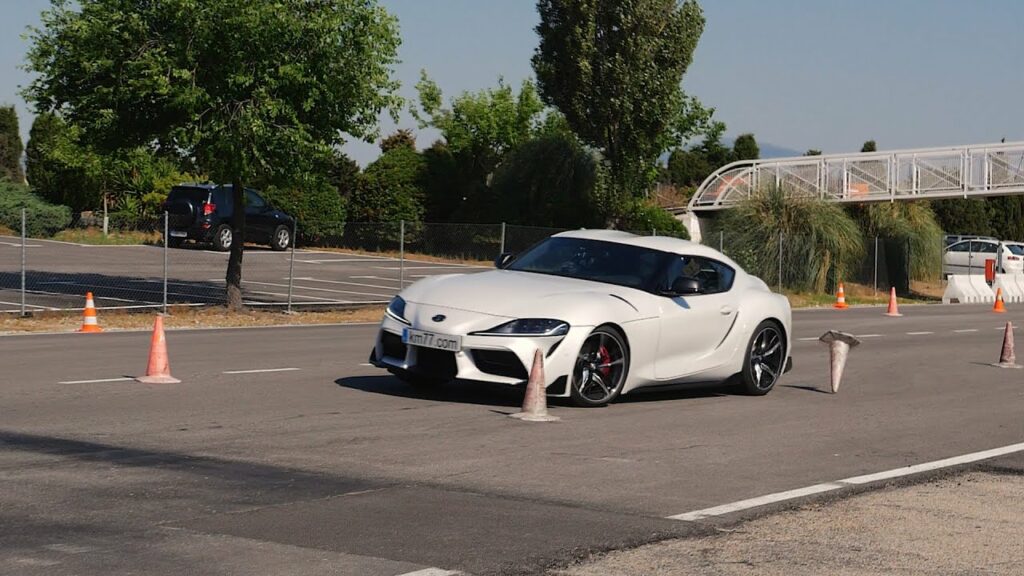
The Tesla 3, which has a very low center of gravity with a high body mass, performed well in the moose test. It drove around the obstacle at 78 km/h. The battery’s good position has provided the Tesla Model X with a low center of gravity, which is ideal for performing evasive maneuvers. For the Tesla Model X, this determined its advantage over similar SUVs in this class and reduced the risk of roll-over by a large margin.
In general, modern D-class sedans can make a double lane-change at 72-73 km/h.
In turn, the record-breaking speeder that showed a maximum speed of 85 km/h in the moose test was the Citroën Xantia Activa. It was in the cars of this model that the hydro-pneumatic active suspension Hydractive was used, which provides excellent handling and stability, as well as the intelligent SC CAR system, which limits rolls in turns. The Citroën Xantia Activa managed to overtake even the McLaren 675LT and Audi R8 V10 Plus supercars. The Nissan Qashqai crossover in the DIG-T 160 Acenta version also showed almost the same result (84 km/h).
Cars that failed the moose test
It happened that the hybrid cars Volkswagen Passat GTE and Skoda Superb IV didn’t show themselves in the best way. Both cars showed signs of instability and lost control when reaching 68 km/h, and when the maneuver speed increased, they skidded at the exit of the lane change. The stern of the Skoda Superb IV even went to the side, and the car turned around. The reason for this was the high weight of the batteries, which are located in the back of the car and disrupt the ideal weight distribution. At the same time, ordinary station wagons based on the Superb and Passat models pass the moose test flawlessly.
The Toyota RAV4 definitely failed to pass the moose test, several times in a row. This car is barely able to reach the required speed of 69 km/h, the rear part skids, and in some cases the wheels come off the surface.
Crossovers are also much inferior to other cars in terms of maneuverability. It is rare that they can quickly evade an impact at speeds over 68 km/h. Experts consider small cars of classes A and B with a base of less than 2500 mm the most dangerous from the “moose safety” point of view. Their design scheme doesn’t allow them to quickly dodge obstacles. When braking, the stern of the small car rises up, and the subsequent maneuver leads to high rolls. Miniature city cars are not able to change lanes at speeds higher than 62-63 km/h and therefore show a tendency to roll over.
The owner of the front torsion bar suspension, the powerful and practical pickup truck-SUV Ford Ranger also failed the “moose” exam. It wouldn’t be able to avoid a collision with the beast at more than 65 km/h. The reason for the failure is the weight and dimensions.
The brand-new Macan became the loser of the moose test, the car crossed the marking and failed it. The Jeep Grand Cherokee failed the test at the first try, because the wheels of the car dangerously came off the roadway. Later, the model managed to pass the test for stability when performing the extreme maneuver successfully.
The Ford Focus was also unpleasantly marked in the moose test, when the Swedes pointed out to the Americans the shortcomings that complicate the handling of the car.
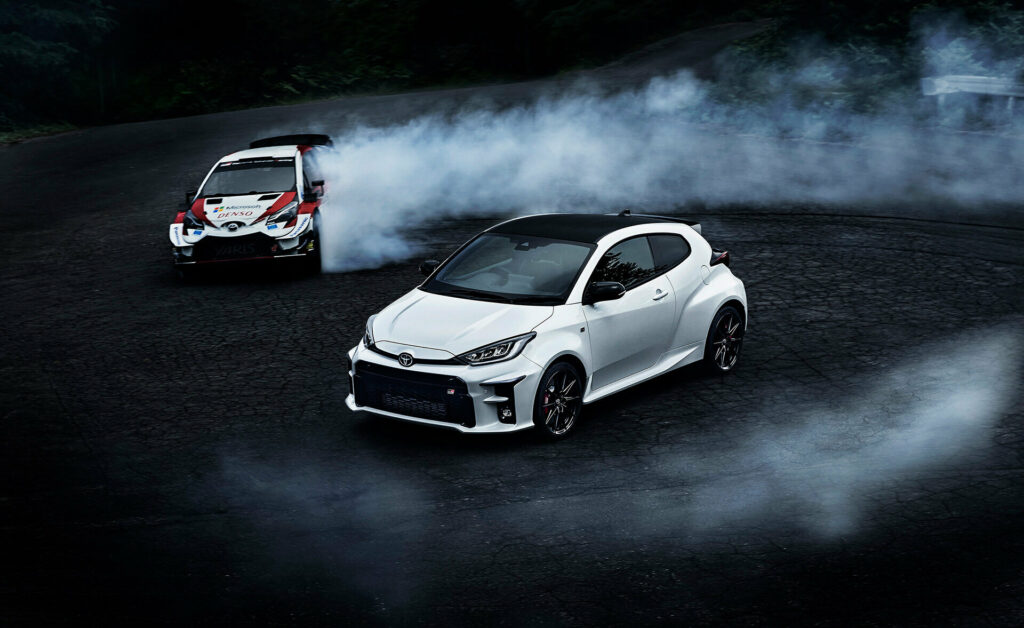
Thanks to the moose test, cars became safer. But you can’t drive even the safest car without a driver’s license! We invite you to quickly and easily process an international driver’s license on our website. It won’t take you much time and effort, but this document will be useful when driving a car in any part of the world, including places where moose are found.

